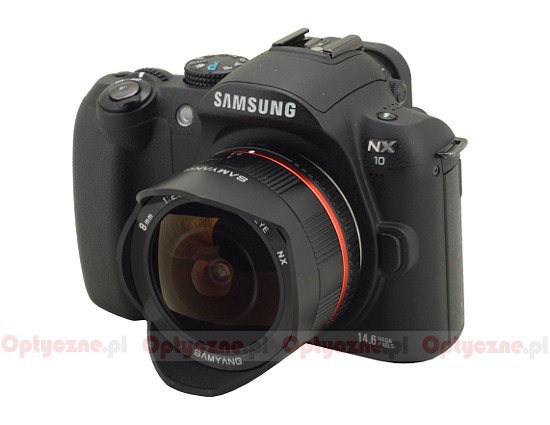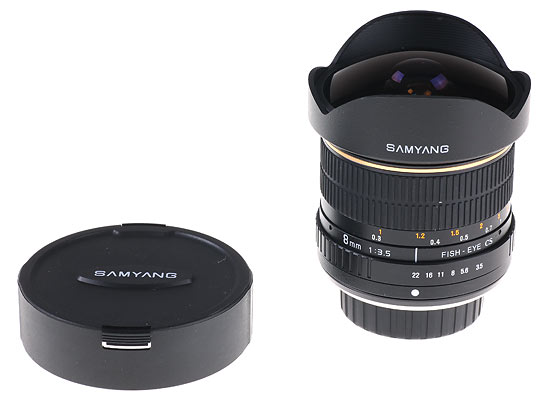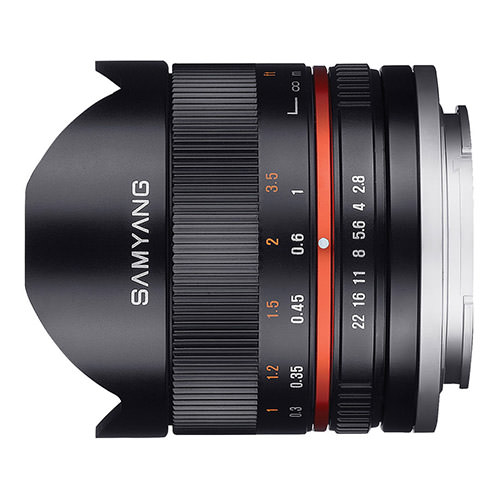

The Samyang is cheaper, does not feature autofocus, and has good optical qualities.Ī disadvantage of fisheye lenses is of course the fisheye projection: They do not feature rectilinear projections like we are used to, but spherical projections. The Lumix lens is rather expensive, but good quality.
#PTGUI SAMYANG 8MM FULL#
Two full frame fisheye lenses for the Micro Four Thirds system are the Lumix G 8mm f/3.5 and the Samyang 7.5mm f/3.5. This is quite impressive, however, a full frame fisheye lens has a diagonal field of view of 180°. At the widest setting, it has a diagonal field of view of 114°. The currently widest rectilinear (non-fisheye) lens for the Micro Four Thirds system is the Panasonic Lumix 7-14mm f/4 zoom lens. KRPano also has some very useful display options, as for instance an "architectural" mode, where walls of building remain vertical when one pans up.When it comes to wide lenses, fisheye lenses are the very widest available. Pano2VR is arguably the easiest way to produce vr tours, but FPP and KRPano provide some unique tools for various special effects. KRPano and Pano2VR are at the moment the only two pano authoring programs that can also produce html5 panos. The only way to view panoramas on mobile devices is with the use of html5 and javascript. There is now also a very good, but expensive Canon 8mm-15mm fisheye zoomlens with a removable lens shade. Instructions for lens shade removal on the Tokina 10-17mm fisheye: įinally, Michel has an excellent review of Samyang, the newest fisheye of very good quality and relatively low cost:
#PTGUI SAMYANG 8MM HOW TO#
Instructions on how to do this on the Nikkor 10.5mm fisheye: This is a bit scary, especially on the Tokina. When using the Nikkor 10.5mm or the Tokina 10-17mm fisheye on a camera with a full sized sensor, such as the Canon 5D, the lens shades need to be removed. There is also an excellent GUI for Enfuse, by Ingemar Bergmark here:

They are included in the Hugin distro package. There is a free Open Source project stitcher, called Hugin:Įnfuse (to "fuse" an exposure series) can be downloaded here: Įrik Krause has made some "Droplets" to semi-automate Enfuse. It is important to always shoot in RAW and do the Photoshopping with 16 bit tifs. More information regarding the above equipment and software list can be found at the panotools wiki. Some other tonemappers are Photomatix, SNS-HDR and Picturenaut (free)
#PTGUI SAMYANG 8MM PRO#
The dynamic range is then compressed, either using "Fusing" in PTGUi Pro or with Enfuse, or tonemapped using FDRTools. Practically all panoramas have been shot exposure bracketed (between 3 and 15 exposure-brackets). Photoshop CS2, CS3, CS4, CS5 or CS6 for RAW > 16bit Tif conversion, PTGui Pro for stitching and blending. I use a Nodal Ninja 3 or Nodal Ninja 5 Panorama Head. A less expensive alternative would be any of the Canon or Nikon APS format DSLRs with a Sigma 8mm f3.5. I use a Canon 6D with Nikkor 10.5mm fisheye or Tokina 10-17mm fisheye zoomlens. very good and clearly explained general photography tutorials. International vr photographers association. my preferred interface for the panotools forum Many thanks to Erik Krause and others who keep this important resource up to date. Best source for information about panoramas.

Overview of Panorama photography techniques by Hans Nyberg.


 0 kommentar(er)
0 kommentar(er)
